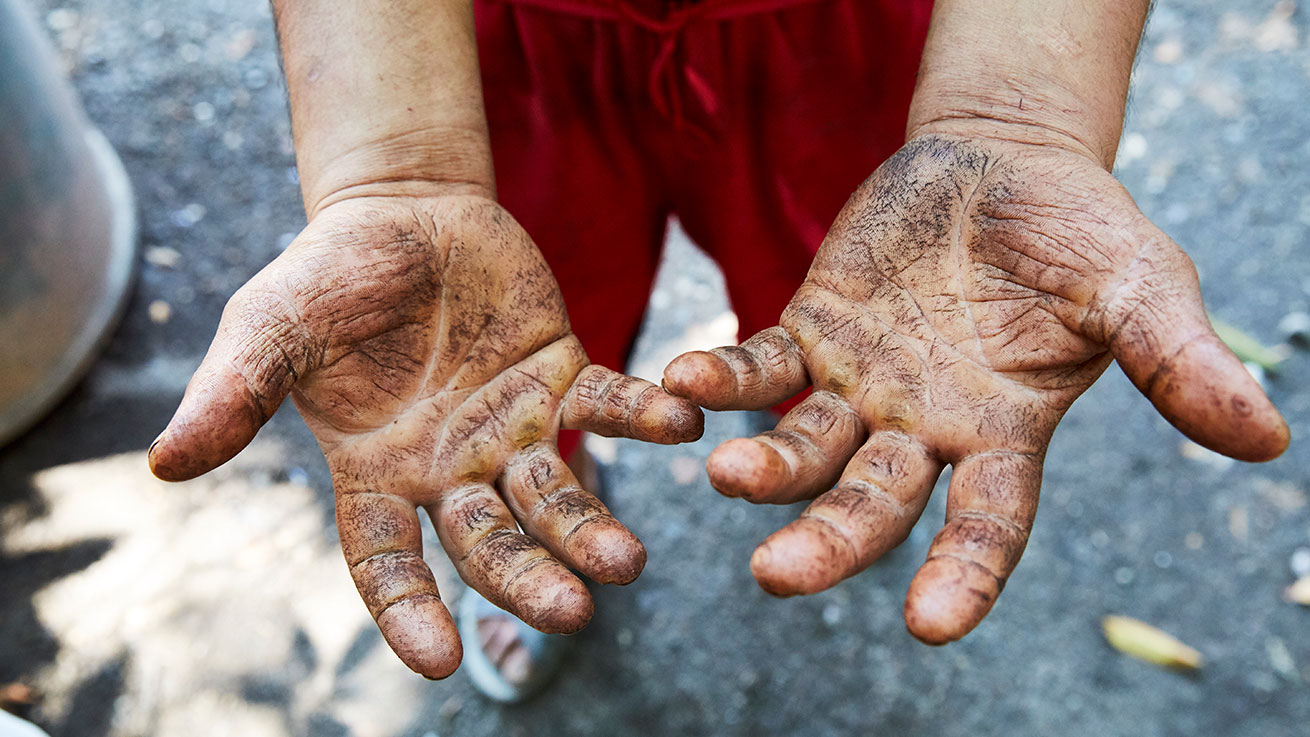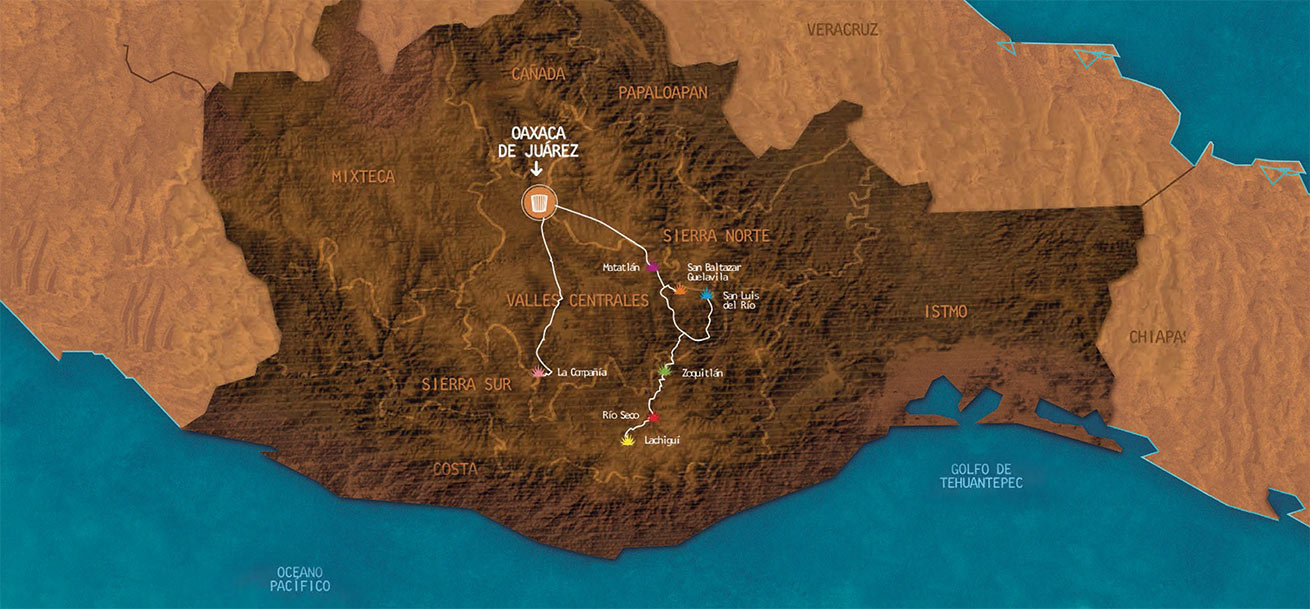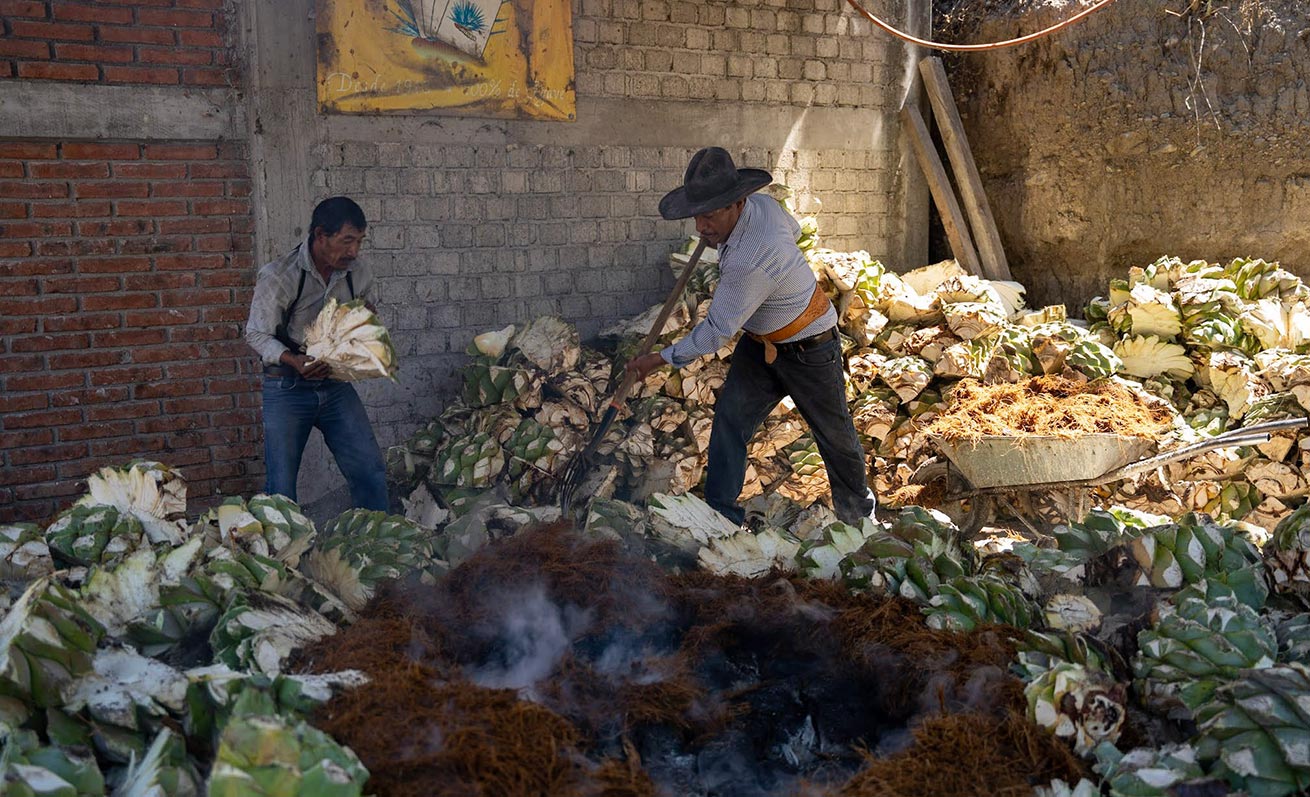

Agave de Cortés is a light, balanced, refined mezcal, making it an ideal sipping spirit, especially for those new to the mezcal category. However, at an approachable price, it also serves as the perfect base spirit for crafting both classic and innovative cocktail creations. Agave de Cortés Joven is categorized as “Mezcal Artesenál,” employing only non-mechanized methods. The Espadín agaves are hand-harvested, cooked in an earthen pit oven, crushed by tahona, fermented in open-air wood vats using native yeast, and distilled twice in small copper pot stills.
| Type | Mezcal |
|---|---|
| Variety | Espadín |
| Volume | 750 mL |
| ABV | 45% |
| Country of Origin | Oaxaca, Mexico |
| Aroma | Delicate and sparkling nose of wood smoke and savory herbs |
|---|
Agave de Cortés Reposado is produced using 100% Espadín agave, rested for a minimum of six months in ex-bourbon barrels and ex-Chardonnay barrels (toasted French oak)., then blended. The oak aging brings out a smoky richness, with favors of caramel, crème brulée, and dusty cocoa. The fresh, fruity agave is prominent with tropical favors of banana and mango. Baking spices and pepper abound in the long, dry fnish.
| Type | Mezcal |
|---|---|
| Variety | Espadín |
| Volume | 750 mL |
| ABV | 43% |
| Age | Rested for 2-11 months |
| Country of Origin | Oaxaca, Mexico |
| Aging | Rested for 2-11 months in second fill Bourbon barrels (Charred, American Oak) and second fill Chardonnay barrels (Toasted French Oak). |
| Flavor | The short window of oak aging brings out a smoky richness, with flavors of caramel, crème brulée, and dusty cocoa. The fresh, fruity agave is prominent with tropical flavors of banana and mango. Baking spices and pepper abound in the long, dry finish. |
|---|
Agave de Cortés Reposado is produced using 100% Espadín agave, rested for a minimum of twelve months in ex-bourbon barrels and ex-Chardonnay barrels (toasted French oak)., then blended. The oak aging brings out a smoky richness, with favors of caramel, crème brulée, and dusty cocoa. The fresh, fruity agave is prominent with tropical favors of banana and mango. Baking spices and pepper abound in the long, dry fnish.
| Type | Mezcal |
|---|---|
| Variety | Espadín |
| Volume | 750 mL |
| ABV | 43% |
| Age | Rested for 18 months |
| Country of Origin | Oaxaca, Mexico |
| Aging | Rested for 18 months in second fill Bourbon barrels (Charred, American Oak) and second fill Chardonnay barrels (Toasted French Oak). |
| Flavor | Extended barrel aging brings out nuttiness and caramelized orange with layers of baking spice and smoked butterscotch, which complement the stewed tropical fruit and brightness of the agave. |
|---|

Mezcal is the purest form of beverage alcohol. From a raw material that takes a minimum of 7 years to mature in the field before harvest, to the non-industrial production processes, there is no spirit that has captivated the attention of our industry quite like Mezcal. At the center of the category, are a handful of thoughtful producers that are ensuring that the future of mezcal is preserved.
Casa Cortés has been working to improve the local economy since its inception. The explosion of mezcal's popularity in recent years has meant more consistent production cycles, especially for export markets. As production increases, so too do the number of jobs needed to ensure the products succeed in a competitive marketplace.
Since 2007, Casa Cortés has grown from a tiny core of 2 - 3 producers making mezcal, to include a team of 40 employees, handling everything from the actual production of mezcal, to bottling, logistics, administrative management, and branding and marketing.
Among its three brands, Casa Cortés works with 17 different families in 16 different regions for the production of its mezcals.


The state of Oaxaca has the largest diversity of flora and fauna in Mexico, which is a direct result of the great geological diversity.
Oaxaca has eight distinct regions, ranging from high elevation pine forests, to tropical coastlines with miles of beach, to rugged mountain terrains. Each region has a distinct microclimate.
Santiago Matatlán is surrounded by mountains, with a narrow valley floor to the NE.
Under NOM-070, the recently amended laws governing classification and labeling, mezcal can be aged for different amounts of time, and its category reflects how old it is:
Joven
"young" or unaged in wood or glass.
Reposado
"rested" i.e. aged in oak for two months to one year
Añejo
"aged" in oak between one and three years
Extra Añejo
this classification no longer exists under the new NOM
The tradition of aging mezcals goes back generations. Producers originally used barrels to transport their mezcal to markets in the eight regions of Oaxaca. Glass was too expensive, fragile, and hard to transport, so barrels became the standard.
Like other spirits, barrel aging softens mezcal’s edges, adding a richness and light golden hue. Casa Cortés only ages mezcal made with the Espadín agave. Aged mezcals offer another expression of mezcal.
Agave Espadín was selected long ago as the agave species that would be the backbone of the mezcal industry.
90% of the mezcal that makes it to market is made from the Espadín agave. Thus, it is highly cultivated in various regions.
Several factors contribute to Espadín's attractiveness as a staple in mezcal production:
Espadín agaves take anywhere from 7 - 10 years to mature prior to being harvested, which occurs around the time that the plant begins to reproduce. At that time, an agave will shoot up a large stalk called a quiote, eventually bearing seeds and bulbs. A mezcalero normally allows the quiote grow for around two months prior to cutting (capón). The plant will often be left to generate more sugar for a short window prior to being fully uprooted and sheared. Only the piña is used in production of mezcal, although the pencas, or leaves, have many uses and are often utilized as fuel for stills or for cooking.
After the piñas are harvested, they are transported from the field to the palenque. An earthen pit oven is prepared by building a roaring fire, often days in advance, to heat the stones lining the pit. Once red hot, the piñas are piled inside and quickly covered with a protective layer, followed by a mass of dirt to insulate the oven, creating an intensely hot earthen pressure cooker
Without roasting, the wild yeast introduced during fermentation will be unable to break down the complex starches. After cooking for several days, the complex sugars in the agave piñas have been converted into simple sugars, ready for milling and fermentation.
The fermented agave mash is distilled twice in copper stills, set atop a wood-oven. As the spirit evaporates and rises in the still, it is trapped and run through a serpentine pipe submerged in cold water, causing the spirit vapors to condense into liquid form.
After the first distillation, the spirit is approximately 37% abv, and increases to approximately 45% - 55% upon the second distillation.

For Oaxacans, mezcal is much more than just an alcoholic beverage. Mezcal represents families and culture. The work is difficult and generations of tradition go into each batch.
The work Dixeebe (dee-shee-bay) is Zapotec word that signifies gratitude... for Mother Earth, for each other, and for each unique moment that we share the gift of mezcal.
| Ingredients | |
|---|---|
| 1.0 oz. | Agave de Cortes Joven Mezcal |
| 1.0 oz. | Lustau Fino Sherry |
| .75 oz. | Giffard Banane du Bresil Liqueur |
| .75 oz. | Fresh Lemon Juice |
| .50 oz. | Giffard Gomme Syrup |
| 4 | Dried Pods of Cardamom |
| 4 pinches | Chile de Arbol (Crushed) |
| Method |
|---|
| Gently muddle chile, cardamom, and gomme syrup. |
| Add other ingredients and shake with ice. |
| Fine strain into a pilsner glass and pack with crushed ice. |
| Garnish |
|---|
| Long banana peel |
| sprinkle of crushed chile de arbol. |
| Ingredients | |
|---|---|
| 1.5 oz. | Agave de Cortés Mezcal |
| 1.0 oz. | Giffard Piment d'Espelette |
| .75 oz. | Fresh Lemon Juice |
| .25 oz. | Agave Syrup |
| Method |
|---|
| Shake ingredients together and strain over ice. |
| Garnish |
|---|
| Lemon wedge |
| Ingredients | |
|---|---|
| 1.5 oz. | Agave de Cortés mezcal |
| 1.0 oz. | Giffard Pamplemousse |
| .75 oz. | Lime Juice |
| .25 oz. | Simple Syrup |
| Method |
|---|
| Shake ingredients together and strain over ice. |
| Garnish |
|---|
| Grapefruit twist |
| Ingredients | |
|---|---|
| 2.0 oz. | Agave de Cortes Joven Mezcal |
| 0.5 oz. | Giffard Cassis Noir de Bourgogne |
| 0.25 oz. | Campari |
| 0.5 oz. | Simple Syrup |
| 0.75 oz. | Lime Juice |
| 2 dashes | Chocolate Bitters |
| Method |
|---|
| Combine ingredients together in a shaker with ice. |
| Shake and strain into a chilled cocktail glass. |
| Garnish with lime wheel. |
| Garnish |
|---|
| Lime Wheel |
| Ingredients | |
|---|---|
| 1.5 oz. | Agave de Cortés Mezcal |
| 0.75 oz. | Lime Juice |
| 3.0 oz. | Ginger Beer |
| Method |
|---|
| Combine mezcal and lime juice in a collins glass over ice. |
| Stir briefly. |
| Top up with ice and fill to top with ginger beer. |
| Garnish with a lime wheel. |
| Garnish |
|---|
| Lime wheel |
| Equipment |
|---|
| Collins glass |
| Ingredients | |
|---|---|
| 1.5 oz. | Agave de Cortes Mezcal |
| 1.0 oz. | Giffard Pamplemousse |
| 0.75 oz. | Fresh Lime Juice |
| 2.0 oz. | Club Soda |
| Method |
|---|
| In a mixing tin with ice, combine ingredients together without club soda. |
| Shake and strain contents into a salted rocks glass over ice. |
| Top with club soda. |
| Garnish with a grapefruit slice. |
| Garnish |
|---|
| Grapefruit slice |
| Ingredients | |
|---|---|
| 1.5 oz. | Agave de Cortés Mezcal Joven |
| .75 oz. | Giffard Rhubarbe |
| .75 oz. | Lemon Juice |
| 0.5 oz. | Simple Syrup |
| 2 Dashes | Celery Bitters |
| Soda Water |
| Method |
|---|
| Combine all ingredients except soda in shaker with ice. |
| Shake vigorously and strain into a collins glass over fresh ice. |
| Fill with soda water. |
| Garnish |
|---|
| Rhubarb ribbon |
| Equipment |
|---|
| Collins glass |
| Ingredients | |
|---|---|
| 1.5 oz. | Agave de Cortés Joven Mezcal |
| 1.0 oz. | Vermouth Routin |
| 1.0 oz. | Campari |
| Method |
|---|
| Combine ingredients in a rocks glass over ice and stir. |
| Garnish with orange peel. |
| Garnish |
|---|
| Orange peel |